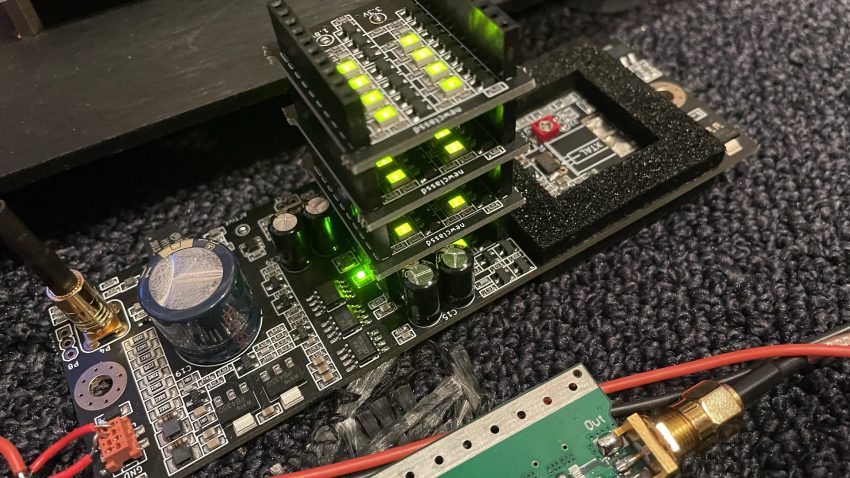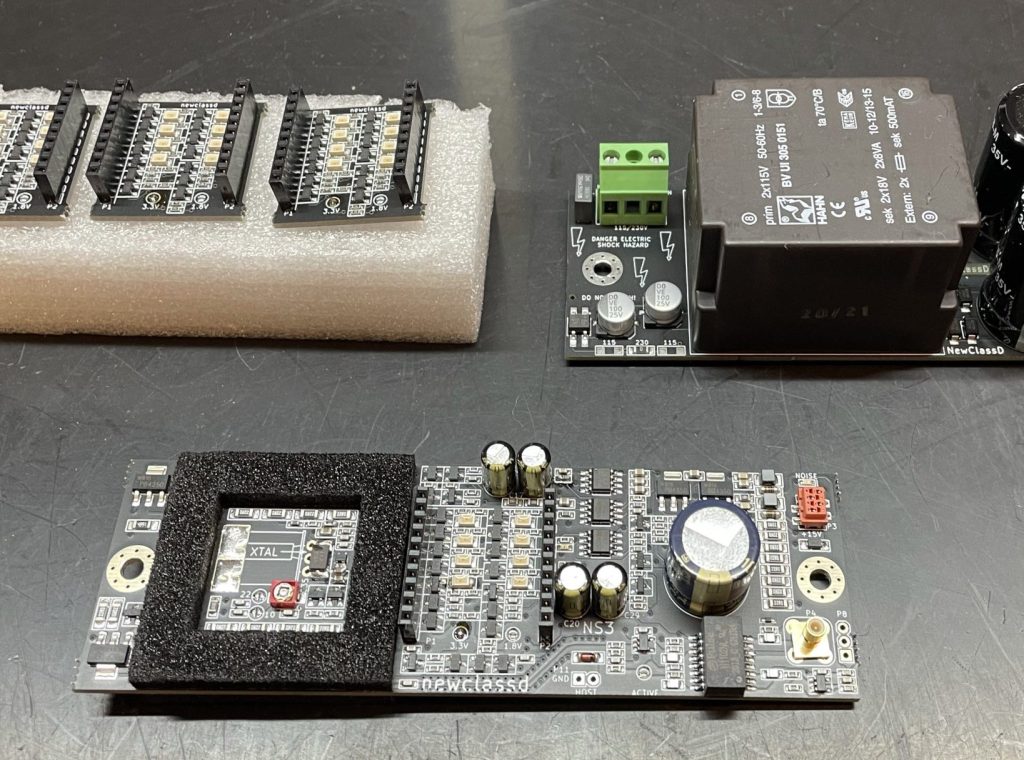
The Clock Reviews (part 5)
NewClassD Neutron Star 3 Clock
Daniel from Berlin was so kind to send me this summer (yes sorry for late response and post !) his newly acquired NewClassD Neutron Star 3 Clock for comparison with the Andrea TWTMC (The Well Tempered Master Clock).
The comparison was not 100% apples and apples as this was a 11MHz clock and the Andrea 5,6MHz. And in the meantime we know that the 5,6MHz base frequency is the best of the Andrea’s series. But anyway, I was hoping to get a good feel of the quality of this clock, which is readily available from the web shop of NewclassD, which is an advantage over the group buys through DIY Audio Forum so far. On top Andrea is banned from DIY forum, so that source is blocked. I know is he working on solutions, but ok, I am drifting off a bit ….
Back to the Neutron Star 3. This is the top model from the line of clocks from this Danish Manufacturer. I will not go in technical details, as it is all on their website. I will just give a short review on my listening experiences.

The clock board has a special option for extra power supply filtering for the crystal section. The small boards (left in the picture) can be just piggy bagged on the board. The power supply noise will be reduced every time with 6dB (NOT the Phase noise to avoid any confusion!)
Talking about phase noise. Daniel sent his clock also to Andrea Mori to have it measured with his Time Pod. I will amend this post when this has been done and publishing is ok with both.
The clock is also working on 15 Volt. Which makes it convenient to compare the Andrea Clocks using the same power supply for both clock brands.
Comparing both:

Above is the set up I did the comparison with. With the doublers I could make a more fair comparison with 11MHz Andrea TWTMC versus 11MHz Neutron Star 3. Power was mostly done with the A123 / Ultracap supply. The picture shows clearly the difference is physical dimensions and what this means for upgrades or new constructions.

For all one thing is clear, with the Neutron Star 3 clock you are consuming less space 😉 In case you missed it in the image above, here it is (left)
Listening
I have been listening on several occasions and the clocks have been powered continuously. Talking about power, the impact of the power supply is not very large, but the battery and UltraCap combination just gives that extra tad of smoothness. But admittedly not as easy to implement as a straight forward power supply.
To be honest I can keep this relatively short as I already described several clocks and their impact. So you need to see it relatively to the other tests as well. The Neutron Star 3 clock was from all clocks (by far – what ever that means) the closest to the Andrea TWTMC clock. Switching back and forward was really needed to get an idea. But in the end, the TWTMC gives this extra openness and texture to the music. The Neutron does that as well and clearly more audible then the other DIL housed clocks and similar to the “Jürgen” clock. But absolutely advisable, for all when space and easy of construction are of importance. The Neutron will find it’s place easily in most existing pieces of equipment, where the TWTMC from Andrea basically needs a new enclosure. For it self or for the newly set up DAC system….

Which leads me to this sneak preview of my own DDDAC designed TWTMC Clock setup with Arduino controlled switching doublers and monitoring of the charging process….
Again: this is the equivalent of two DIL clocks… Just think about THAT…
(will blog when 100% ready)
Conclusions and next…
- Thanks Daniel for sending me the clock !
- I hope Andrea Mori will measure phase noise of the neutron versus the TWTMC soon 🙂
- The neutron Star 3, no doubt, is a great sounding clock, very close to the reference
- Is also a more practical solution when it is not a “cost / effort no object” project
- Oh, I also tested Ian Canada’s SinePi squarer board …. so we are not done yet 🙂
to be continued !
9 thoughts on “The Clock Reviews (part 5)”
Great comparisons and feedback DD. All this information is worth in gold as many of us will never have to resources to try these many clocks with our DACs.
I would still like to pose a question, whether it is fair or not. At this point with my dddac build, i would not want to go to the twtmc coz of its size and complexity. Hence the neutron clock might still be considerable to integrate (only from a size standpoint). However, could you still cite how big would be the sound differences between the neutron clock vs the accusilicon 318 clocks? Is going to neutron clocks from accusilicon worth it from a price to performance ratio considering neutron costs more than 20X?
Fair question Kartic. In my opinion the Neutron Star delivers more musicality then the Accusilicon clock. But again, differences are not huge, but still very nice. IF it is worth the money is a very individual decision. Example, I drive an 8 cylinder Audi. There is also a 6 cylinder version. Same car, same seats etc. it is significantly more expensive- does it make sense ? To come from A to B no way. Is it fun driving? Oh yes, you bet… I had the budget, so it was ok. I would never have had save money for it though…..
Have you thought about a comparison using a multideck version of your DAC? I am wondering if the clock differences are more or less audible with a single deck or a multi deck DDDAC?
Best regards,
Daniel
Hi Daniel, my thinking was, that clock differences should be audible also when a more “simple” set up is used, hence I used the one deck version.
Like: “after that it only can get better” 😉
Hi Doede,
I am in the process of planning a new reclocking device. There is already a good gain in sound quality using Allo KALI with the supplied NDK clocks.
Would like to try the maxed out solution with IAN FIFO Q3, Andrea Clock, Super-caps, HDMI interfaces
Do you have any preliminary results regarding the comparison SinePi vs Andreas squarer board? Any further ideas for a cost no object configuration?
Ciao
Peter
Hi,
I got NS3 and TWTMC, both @ 22.xxxxMhz.
My setup is dual diff ad1865, passive transformer I/V, NOS.
After head to head comparison in same conditions (just changing the clocks) my impression are following:
NS3 – is more energetic and clean, while TWTMC is more on soft side.
To be honest I still cannot decide with which one I want to live 🙂
One thing is for sure: It is step in comparison with all dil clocks and you cannot go wrong with either of them.
Thanks for this confirmation. You heard very similar like me. I agree that it might be a matter of taste or rest of the audio chain
Doede,
I also found that different PSUs to clocks (battery, ultracaps, good linear regulators) does not differ that much in terms of SQ. What is more important however in my case is actually powering the squarer. Powering it directly with 2x3000F ultracaps bank brought increase in SQ versus good 3.3V linear supply.
Interesting feedback! Thanks…. next try….